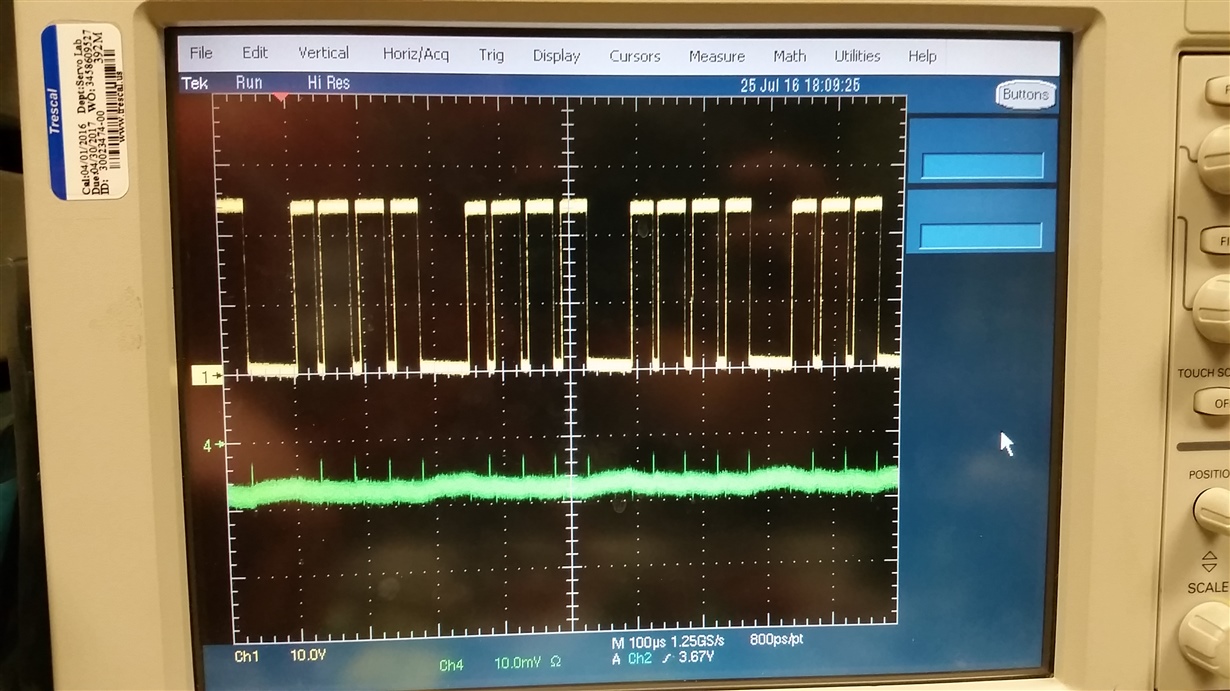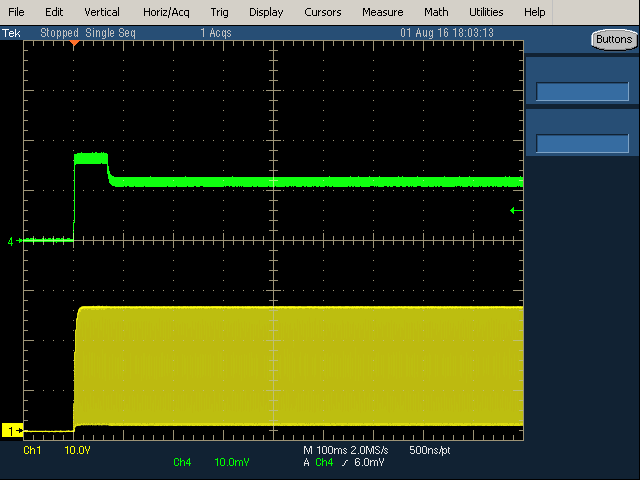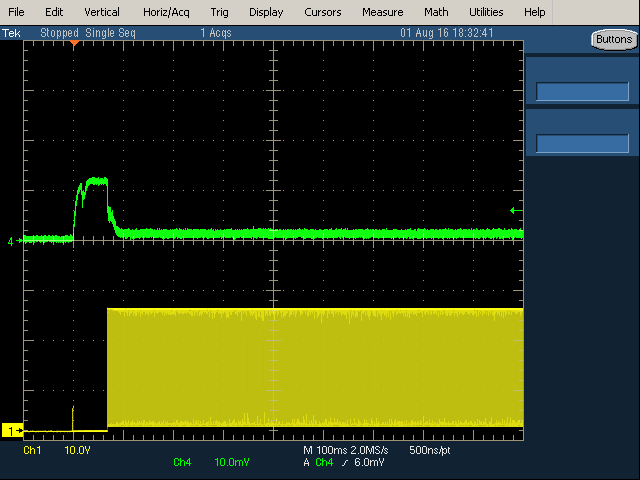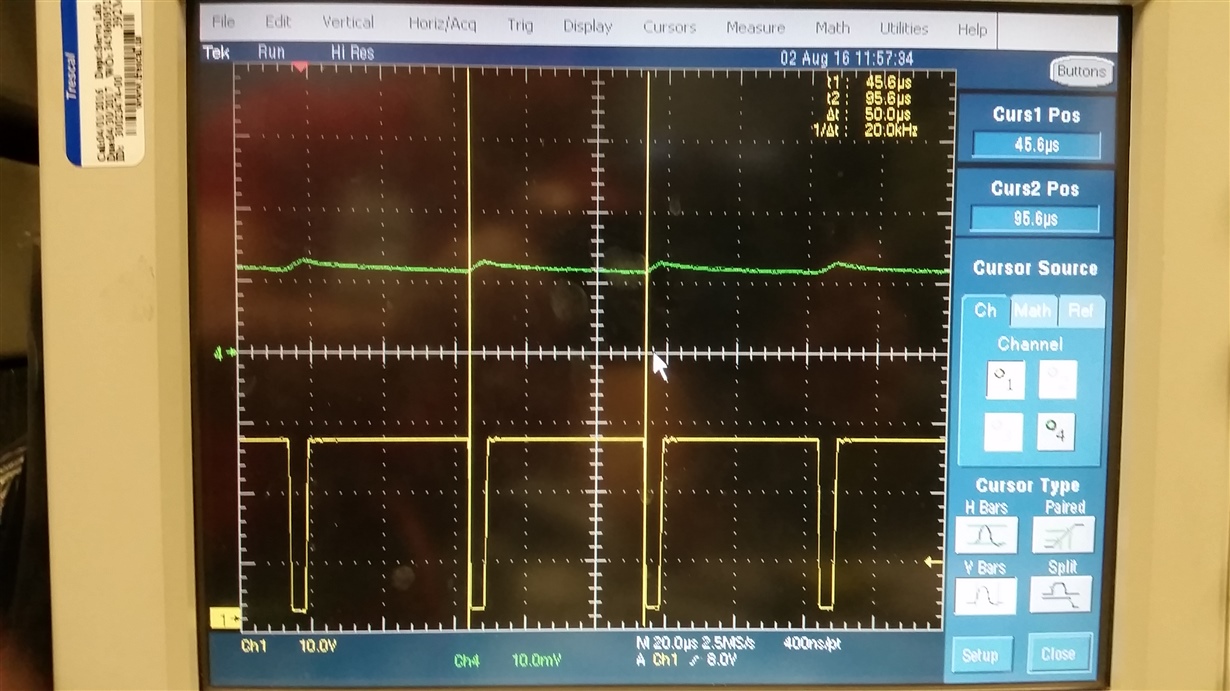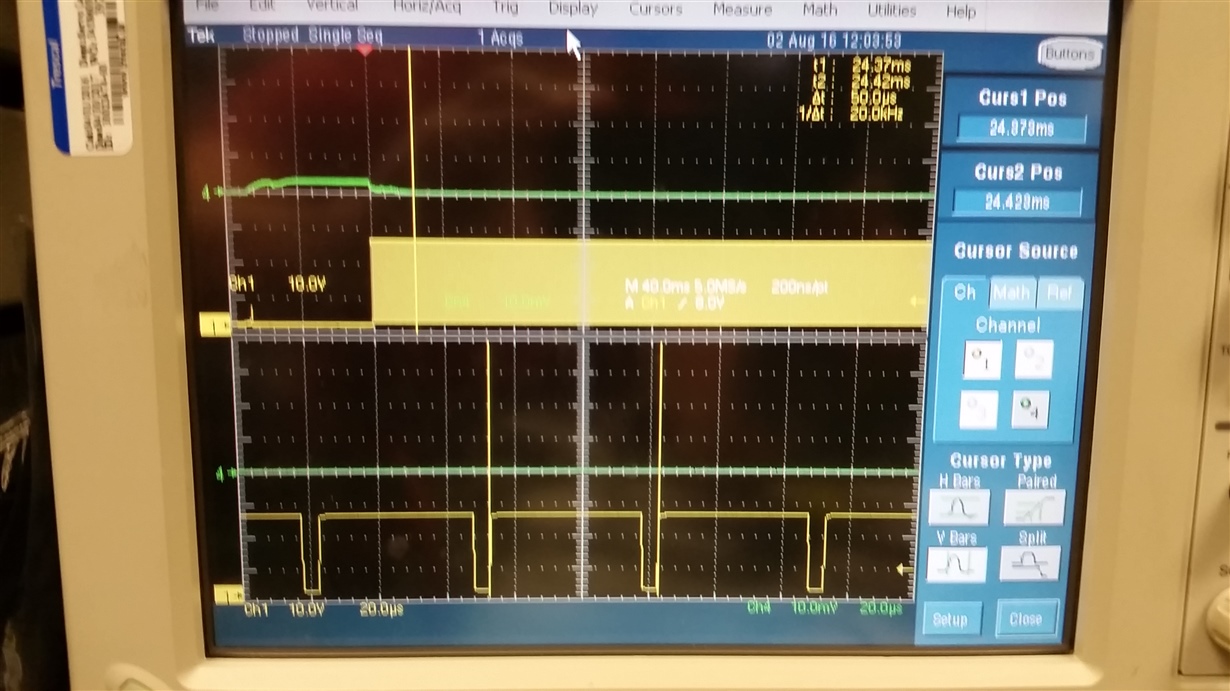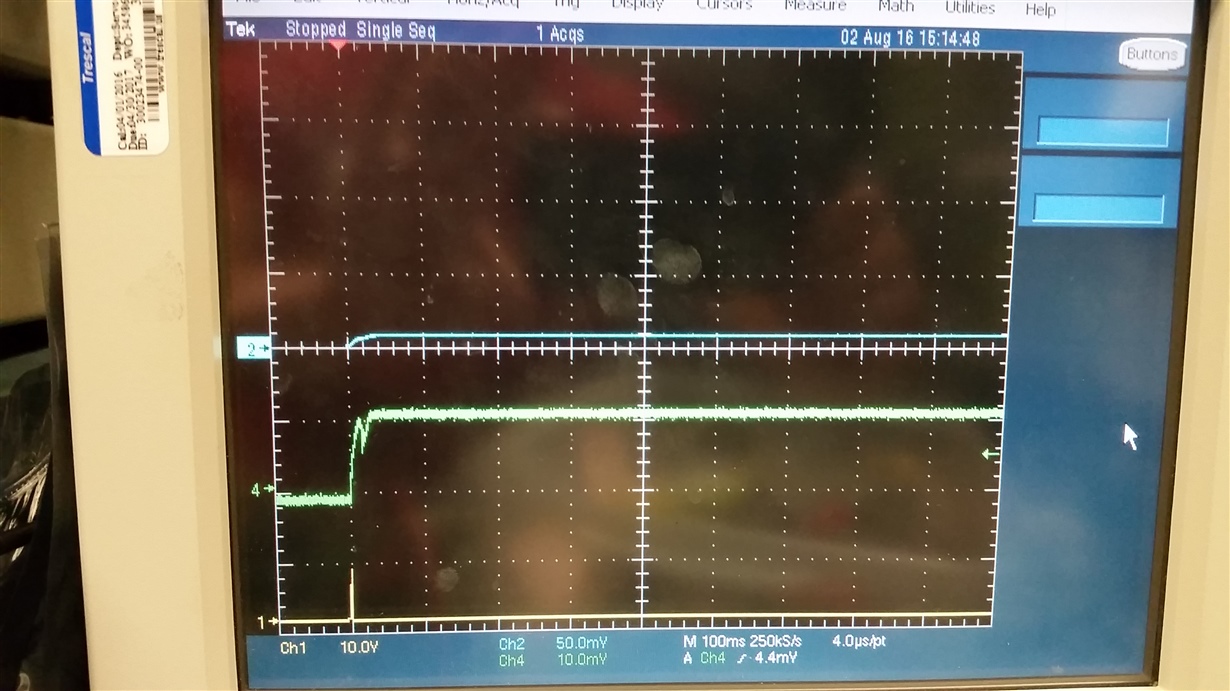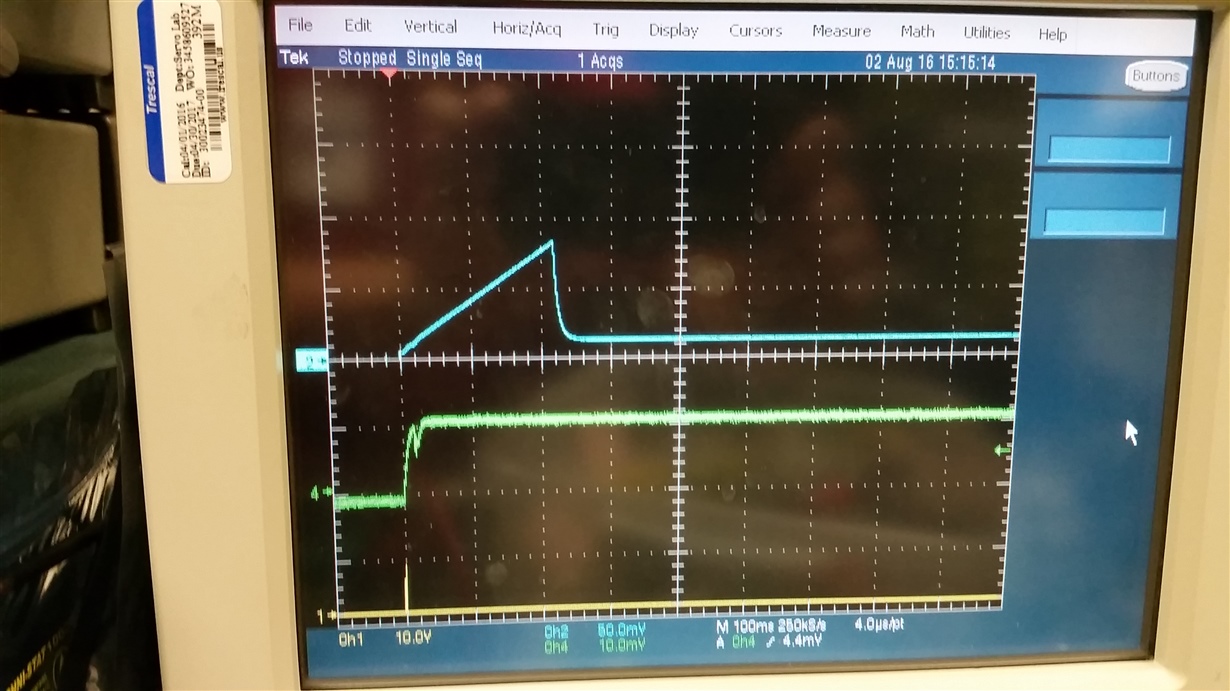On DRV120 when I only change the resistor on OSC pin the PWM frequency changes as expected but also the TKeep changes what is not to be expected.
We made a little pcb board with DRV120 using ceramic capacitors C7 of 4u70 on VIN and GND. C6 on pin 1 KEEP and GND. R3 on pin 3 OSC and GND. pin2 PEAK connected to GND. pin 8 Enable is floating/NC. pin 6 is floating/NC.
We first had a resitor of 47k on R3. That produced a good signal on PIN 7 OUT. it gave a Tkeep of about 170mS. I measured with an scoop on VIN and on OUT of the chip. after 170mS we see VOUT is PWM
Second we changed only R3 to 68K. this gave us a tkeep of about 2 ms. When we look in the datasheet on page 8 formula 1 we see only that tkeep is dependent on Ckeep.





